What Does Transparency in Business Look Like After a Global Pandemic?
Table of contents
The COVID-19 pandemic sent the world into lockdown, marking a pivotal moment where many started their work from home journeys. But did transparency improve once we all started working remotely? We asked 1,000 working adults in the U.S. for their thoughts on transparency in our new hybrid workplaces. Here are the results.

You would think that with the dramatic global shift to remote work brought by the global pandemic, businesses would have been forced to become more open and transparent about strategies and processes in order for their employees to work effectively. However, this was not the case.
To better understand employees’ mindset surrounding this new work landscape, The Org conducted a study — with more than 1,000 respondents across all ages of working adults in the U.S. — to gauge businesses’ successes and shortcomings when it comes to operating transparently. What we found was that nearly half of respondents said that since the start of 2020, there has been no improvement in transparency at their place of work - despite a desperate need for this, to counteract the difficulties that come with remote work
We broke down what it means for a company to be transparent and whether employees value transparency. Spoiler alert: they think it’s pretty important.
What does it mean to be transparent?
When asked what employees associated with the term "transparency," 38.41% of respondents said they thought of company values and culture, while another 29.53% said they thought of company strategy and processes.
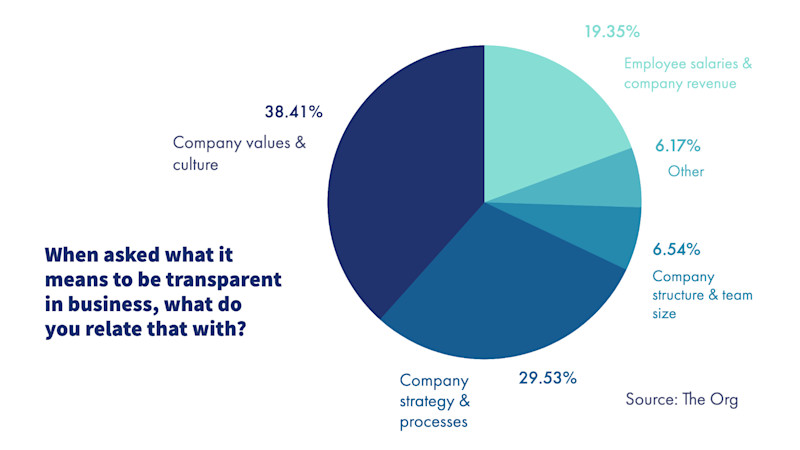
Generationally, there was a bit of a divide. Gen Z was more likely to relate transparency with company strategy and processes (32.37%) while Millennials, Gen X, and Baby Boomers all said company values and culture remained top of mind.
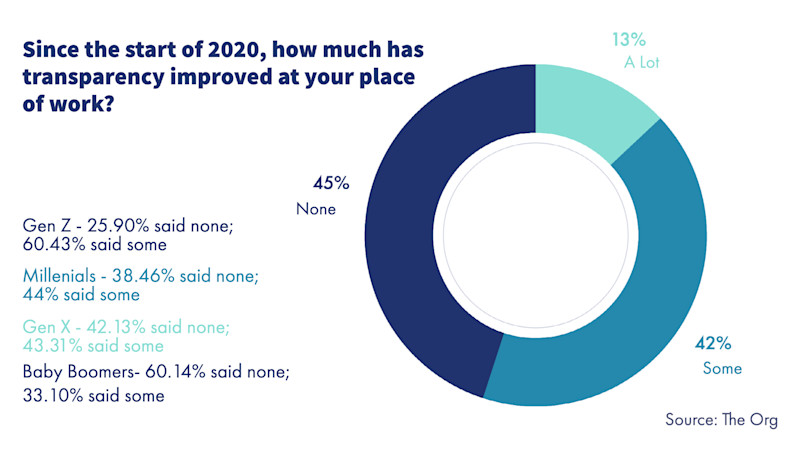
We also asked respondents how they currently saw transparency as a function in the workplace. Nearly half the employees we surveyed felt there'd been no improvement in transparency efforts at their workplace since the start of 2020. Additionally, about one-third of respondents said their company had actually gotten less transparent since shifting to remote work.
For Millennials transparency is particularly important. 80% said they believed their work-life would be better if the company they worked for was transparent, and 74% said they want their companies to be more transparent.
Overall, 68% of respondents said they wanted their companies to increase transparency efforts, and 73% said their work-life would be improved by their companies doing so.
What matters most to Millenials?
When employees were asked what mattered most to them at their place of work, the majority said knowing their company’s values and culture. This was particularly apparent for younger generations, who are all in when it comes to corporate transparency. Company values and culture was the most relatable characteristic for Millennials at 37%. Employee salaries and company revenue and company strategy and process were their other top-rated characteristics.
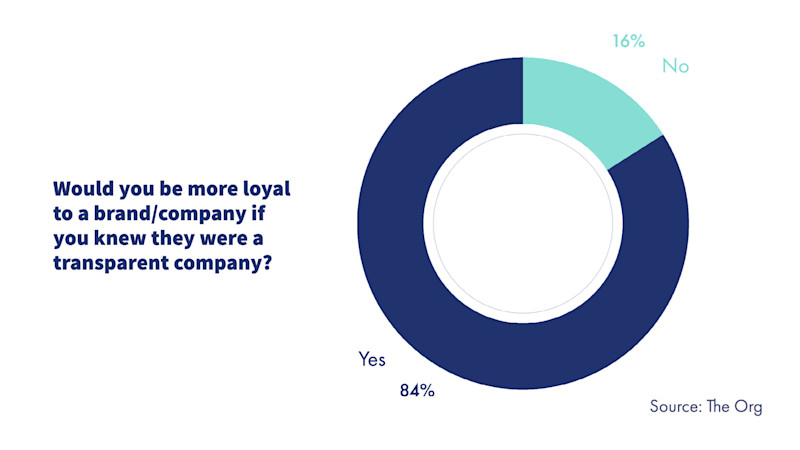
Additionally, 38% of Millennials said that their place of work has shared a public commitment towards transparency -- higher than Gen Z, Gen X, and Baby Boomer respondents -- and only 22% of Millennials say they don’t know or understand their company’s strategy for success and what their role is in it -- the lowest of all of the generations. This, coupled with the fact that 84% of Millennials said they would be more loyal to a brand that was transparent, shows how strong their commitment is to being part of something.
By all accounts, Millennials value transparency.
Transparency and the job search
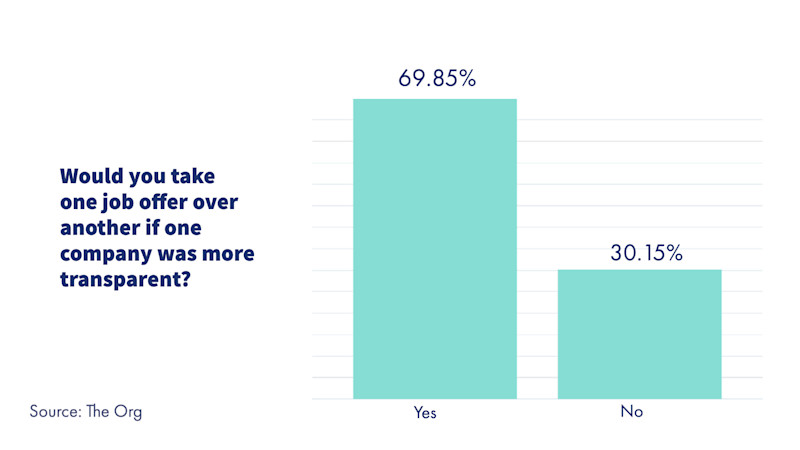
Findings confirm transparency has become a valuable part of job seekers’ experiences. Nearly 70% of respondents said they would take one job offer over another if the one company was more transparent. And for those not looking to move jobs, over 65% of respondents said that they want the company they currently work for to become more transparent.
What tools are being used to promote transparency?
A fundamental part of corporate transparency is knowing who exactly you work for and who you work with. But surprisingly, many employees don’t. Org charts are the best way to communicate to employees who they work with and where they sit in the organization, and can also be used to help define reporting structures. However, we found that not enough are shared with employees
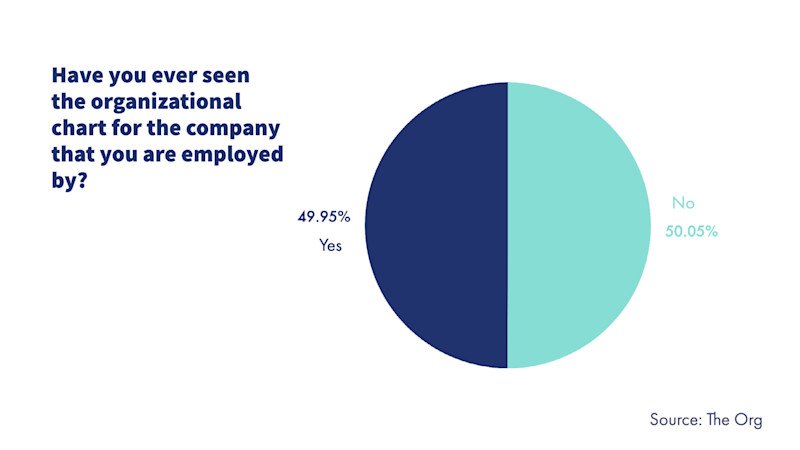
According to the survey, nearly half of respondents have never seen their company's org chart. Getting more granular, 53% of women had not seen the organizational chart for their company and 54% didn’t have visibility into their company’s numbers. This was staggeringly different to men, where those numbers were 44% and 46%, respectively. Additionally, 61% of Gen Z respondents said they had never seen the org chart of the company they worked for -- a clear indication that today’s employers need to be doing better at sharing important company information with junior employees.
--
The Org is a professional community where transparent companies can show off their team to the world. Join your company here to add yourself to the org chart!
In this article


The ORG helps
you hire great
candidates
Free to use – try today